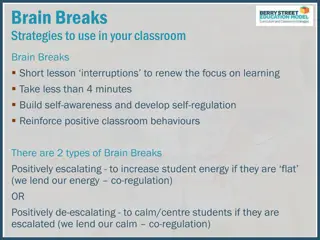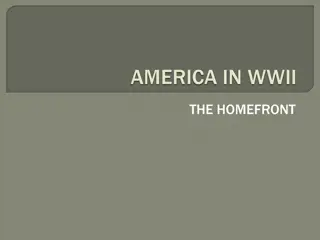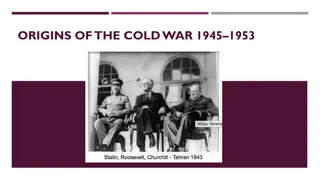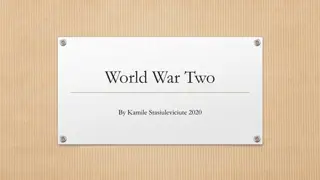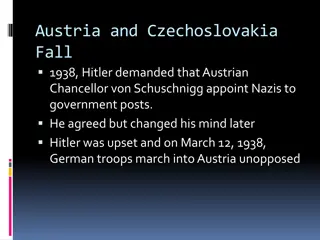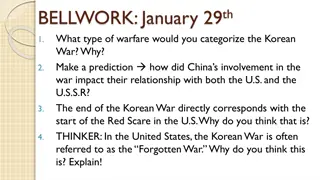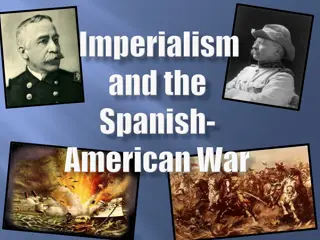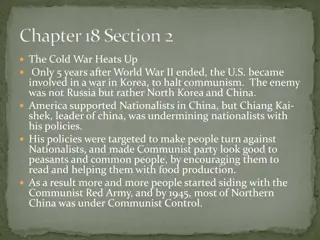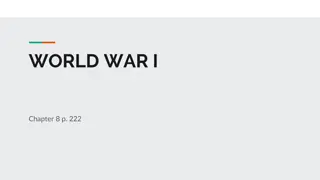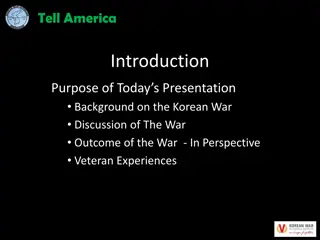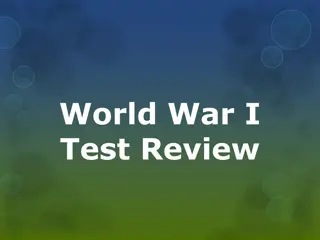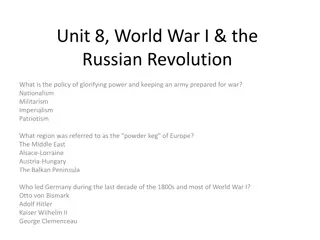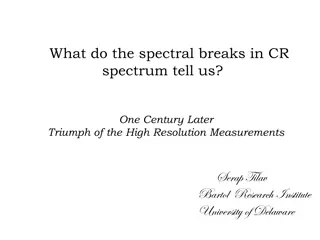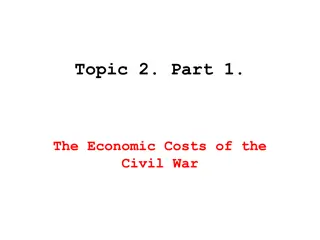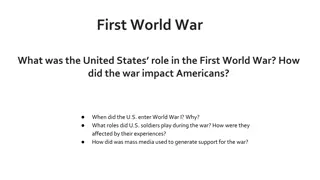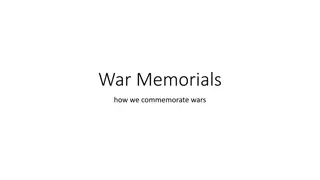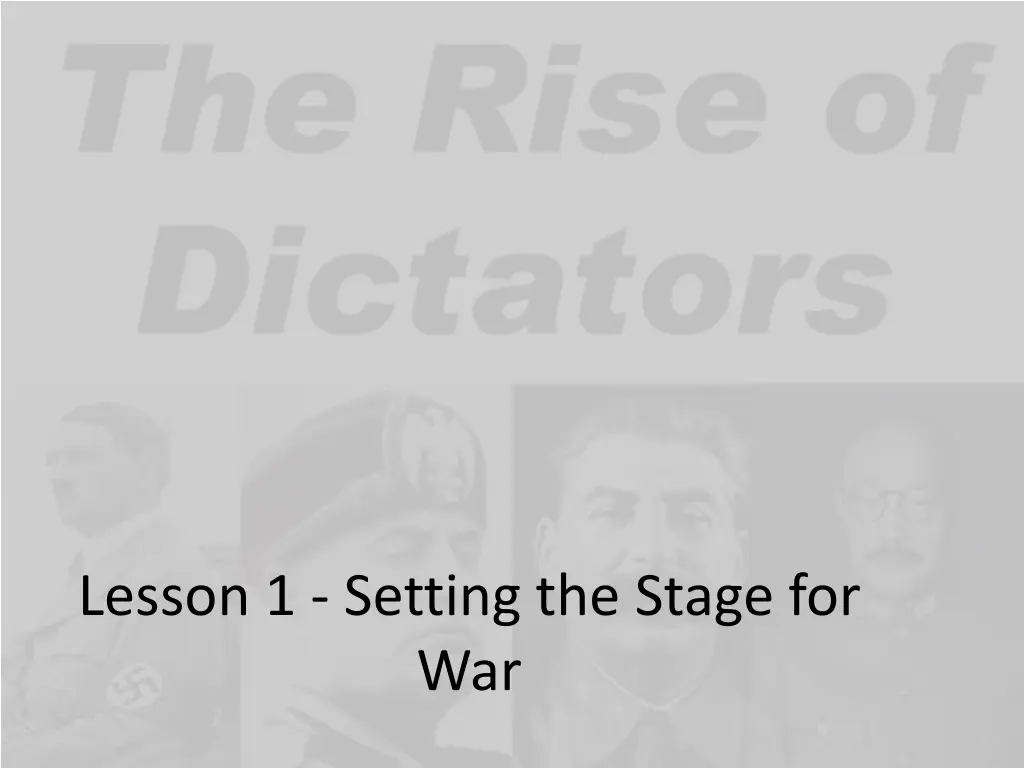
Seeds of Conflict: Causes of WWII
Explore the seeds of conflict that led to World War II, including the rise of nationalism, communism, dictatorship, socialism, and fascism. Learn about the impact of events such as WWI, the Treaty of Versailles, and the Bolshevik Revolution in shaping the global landscape. Uncover the economic, political, and social factors that set the stage for war and revolution in the 1930s.
Download Presentation

Please find below an Image/Link to download the presentation.
The content on the website is provided AS IS for your information and personal use only. It may not be sold, licensed, or shared on other websites without obtaining consent from the author. If you encounter any issues during the download, it is possible that the publisher has removed the file from their server.
You are allowed to download the files provided on this website for personal or commercial use, subject to the condition that they are used lawfully. All files are the property of their respective owners.
The content on the website is provided AS IS for your information and personal use only. It may not be sold, licensed, or shared on other websites without obtaining consent from the author.
E N D
Presentation Transcript
Guiding Question: What were the seeds of conflict (causes) that led up to WWII? By the end of this lesson you should be able to answer this question!
Important Terms Nationalism Devotion and loyalty to one s own country above all others and the desire for advancement of national interests. Communism A stateless, classless society where the economic means of production are controlled by everyone. (Karl Marx s Utopian Society )
Important Terms contd Dictatorship A government headed by a single authoritarian figure. Socialism Cooperative management of the economy and social ownership of the means of production. State-Socialism The government plans and manages the economy. Fascism Government controls all aspects of its citizen s lives.
During the 1930s Strong nationalism spread throughout Europe and Asia many societies want to return to their former greatness. Some parts of the world were just starting to form strong national identities especially those who had been previously colonized by global empires.
WWI: The Seeds of Conflict Because the ending of WWI had not brought peace and prosperity for some nations, widespread revolution occurred in Europe. These revolutions in various countries were fueled by economic depression and a desire to return to greatness.
WW1: The Seeds of Conflict The Treaty of Versailles was the peace deal that ended WWI and put much of the blame of the war on Germany. Affects: 1. Made many Germans angry and resentful -- feeling as if the blame had been unjustly put on them. 2. Burdened Germans with war debt and hurt their economy (Remember the Dawes Plan?)
In Russia The Bolshevik Revolution took power from the old monarchy of Tsars and gave it to the Bolshevik Party (led by Vladimir Lenin). The Bolshevik Party promised the Russian people a new great society built on the ideas of communism / Karl Marx. However, they never lived up to their promise instead establishing a state-socialist dictatorship.
In Russia After Vladimir Lenin died in 1924, Joseph Stalin took power and continued the tradition of a state-socialist dictatorship, now known as the Soviet Union. Stalin s Five Year Plan(s) 1. Replace privately owned farms/factories (MoP) with government owned collectives. 2. Transform the nation from a feudal farming society to an industrial world power 3. All economic activities were placed under government control
In Russia By 1937 the Soviet Union had become the world s second-largest industrial power (surpassed only by the U.S.) The human costs to this transformation were enormous 1. Stalin eliminated all threats to his power resulting in the deaths of 8-13* million people
Rise of Fascism in Italy Background: Economic problems in Italy produced bitter strikes and protests, some of which were perpetuated by communist revolutionaries. This scared the wealthy upper class so they demanded stronger leadership to stop these protests.
In Italy Benito Mussolini took advantage of this situation. He was a powerful speaker and appealed to the fears of economic collapse and communism and Italy s wounded national pride. By 1921 Mussolini had established the Fascist Party which stressed fierce nationalism and complete control over all aspect s of its citizens lives.
DURING WORLD WAR 1: (No need to write this) News of the war s end reached Hitler on October 13th on a hillside in Flanders, where the British rained down gas grenades all through the night on the German trenches. Evacuated to a hospital in the rear, Hitler was later told by a sobbing chaplain that the Kaiser had been dethroned. His eyes still red and half blind, Hitler stumbled back to his cot and cried. So it had all been in vain, he grieved. All the sacrifices and starvation, in vain the hunger and thirst the deaths of millions. (Source: Mein Kempf)
Rise of Nazism in Germany Adolf Hitler, a German WWI vet joined the Nazi Party (National Socialist Party). Like Mussolini, Hitler was a powerful speaker and organizer and he quickly became the party leader. Eventually, despite losing the election, Hitler was appointed Chancellor and established a State- Socialist Dictatorship.
Hitler promised to bring Germany out of the political chaos and economic hardship it experienced after WWI. Mein Kempf A book written by Hitler that set forth his basic beliefs and became the blueprint for his future plans for a German Empire. Racial Purification Hitler was influenced by the Eugenics movement from the U.S. and the writings of Henry Ford. He believed that the German people were the Aryan (master) race.
Due to this belief, Hitler launched a campaign that blamed Jews, Slavs, and all he considered non- Aryan for the Germany s defeat and problems. This led to the Holocaust or the systematic murder (genocide) or Jews and other non-Aryans.
People in Germany supported Hitler because: 1. The Great Depression had hit Germany hard and the country had become entirely chained down by war debt to the U.S. 2. Desperate, struggling people turned to Hitler as a last resort they wanted to return to the German prosperity and greatness of the past.
Victims of Holocaust: 6 million Jews **on the test Soviets: 7 million Polish (non-jewish): 100,000 Serbs: 312,000 People with Disabilities: 250,000 Roma: 220,000 anbout 140,000 more
In Japan The Military was highly influential on par the Emperor. A Military Dictatorship was established. Leader: Hideki Tojo Like Hitler, the Japanese military leaders wanted to conquer new lands for the destiny of its people. In 1931, the Japanese military seized control of the Chinese province of Manchuria
In Japan The Japanese military was hoping to use the deposed Chinese Emperor (an 8-year old boy) to establish a Chinese Puppet State. The League of Nations investigated the matter and confirmed the event as Japanese aggression. In response, Japan quit the League.
Germany Violates the Treaty of Versailles As punishment given at the end of WWI, the League of Nations said that Germany could not have a military. Hitler took notice of the League s failure to do anything about Japan. As a result, he pulled Germany out of the League and started rebuilding the German military. Again the League did nothing.
Meanwhile in Italy Mussolini began building his New Roman Empire. He sent troops into Ethiopia, one of the few remaining independent countries in Africa. The League does (almost) nothing. It is us today, but it will be you tomorrow. -Haile Selassie, ousted Ethiopian emperor.
Spanish Civil War of 1936 In 1936, a group of Spanish army officers led by Francisco Franco rebelled against the Spanish Republic. This led to revolts all over Spain and the formation of libertarian socialist communities all over Spain. *This is the closest the world has ever seen to actual communism.
Spanish Civil War of 1936 Eventually, the military group led by Franco established a fascist government and started trying to take back over Spain. The Abraham Lincoln Battalion US Citizens who came to Spain to fight Franco. The USSR sent supplies to the rebels
Fascist Spain Finally, with Hitler and Mussolini s backing, Franco was able to end the war. The result of this event was an official German-Italian alliance.
Meanwhile in the U.S. The public was largely isolationist. Many people felt that greedy bankers had dragged the US into WWI for profit Congress passed Neutrality Acts which tried to keep the U.S. out of foreign affairs
Roosevelt & War FDR spoke out strongly against isolationism in Chicago This was called the Quarantine Speech and it resulted in an isolationist newspaper exploding in protest against FDR. FDR backed off and for the moment the conflict would remain over there.
Dictators Web Diagram Create a web diagram depicting the following information: 1. Dictator s name 2. Country he ruled 3. How he came to power 4. What type of government he established
Activity Quarantine Speech (Start at 11:00) Listen and read along with the Speech. 1-2 paragraphs (at least): 1. Analyze the speech by underlining important parts, writing in the margins, etc 2. Summarize the speech

![❤[PDF]⚡ Civil War Talks: Further Reminiscences of George S. Bernard and His Fel](/thumb/20551/pdf-civil-war-talks-further-reminiscences-of-george-s-bernard-and-his-fel.jpg)

